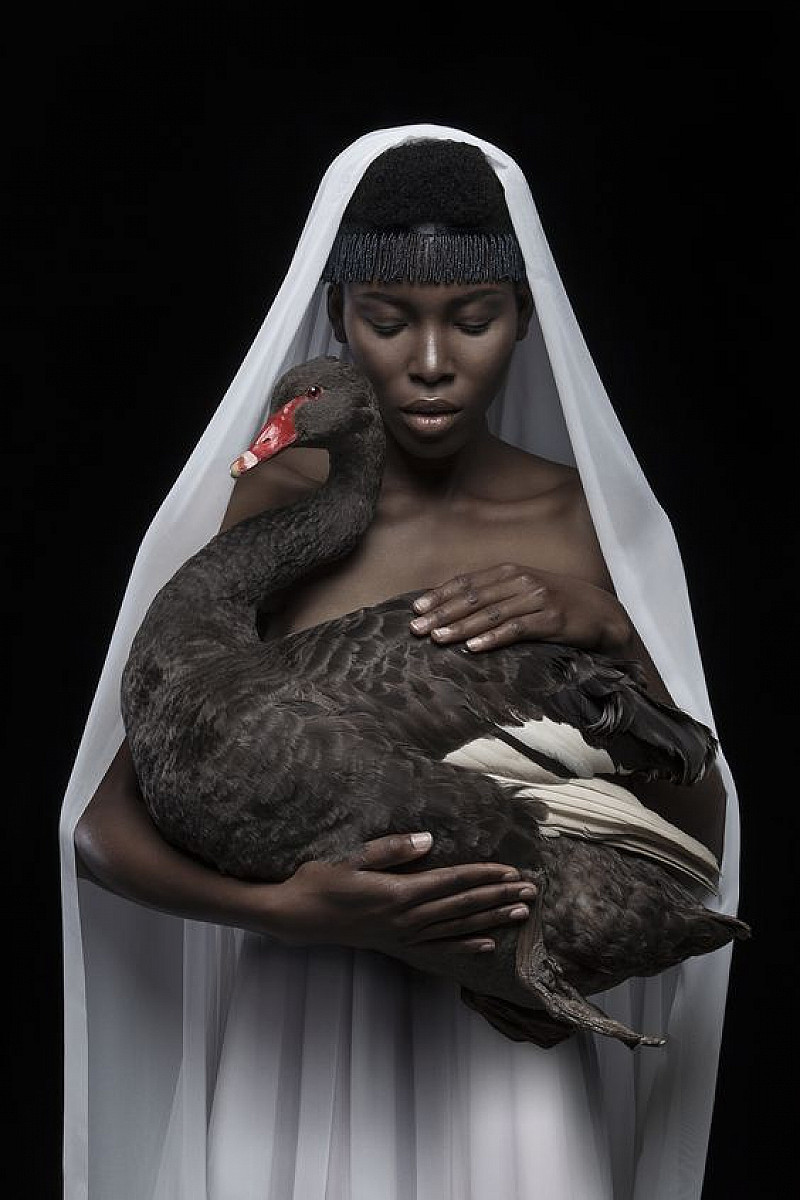- This is a Black Swan
- Justin Dingwall
- 2016
- Photographic Gliclee print on 100% cotton fine art paper
- 9/10
- Sheet Size: 84.1 x 118.9 cm centimeters
The idea for these images started at a time when South Africa was focused on the issue of xenophobia, which was prominent in discourse all throughout the country. Many people were leaving their homes from outside South Africa’s borders and travelling to find a new place to fit in. For reasons of poverty, lack of work opportunities, etc.. they were looking to find a new “identity” in South Africa. Unfortunately, many local people refused to accept them and they were persecuted. At this stage especially, there was a violent reaction to the influx of foreigners. The media was filled with many violent altercations between the local communities and the foreigners. These people were unable to return to their home countries and were also not accepted in their new surroundings.
The folktale of The Ugly Duckling inspires the theme of acceptance and being discriminated for being different. When a young swan is hatched into a family of ducks, he is perceived for his difference as “ugly” by the other animals. Even his own family shuns him. The young swan is not accepted and he leaves in search of his identity. He faces many obstacles where he is expected to conform to certain norms, and when he cannot he must each time continue his journey towards his identity.
This links with the characteristic that swans are nomadic, forever in search of better living conditions. The theme of movement is foregrounded in the symbol of the swan and it also mirrors the movement of people, both in search of a place “to fit in” and to exist; a place where they are accepted. This acceptance is reflected in the maternal embrace of the female figure in these images.
A mother symbolises comfort, acceptance, protection, provision and compassion. In a way she can be perceived as a Mary figure.
The beaded veil that the female figure wears over her eyes represents the unconscious dismissal of difference. The acceptance of a person that involves a “blindness” to their dissimilitude… the mother that overlooks any disparity in her child and accepts their uniqueness.
A black swan is specifically portrayed, in contrast to the more common white variety, to represent the contradistinction to the norm – to represent beauty in difference.
The swan is a central symbol in these images, not only depicting beauty in difference as well as acceptance of dissimilitude, it also evokes the Black swan theory in accordance with the turmoil caused by xenophobia in South Africa. “A black swan event depends on the observer” (according to essayist and risk-analyst Taleb), and these images express the perception of the unforeseen and unexpected calamity that occurred. In what some perceived as predictable circumstance in reaction to the pressures placed on society, others viewed with shock and disbelief. The black swan theory emphasises that knowledge comes with hindsight. These images aim to provide a means of coming to terms with these societal issues in an effort to increase our awareness towards changing our perceptions.
Information courtesy of Justin Dingwall
